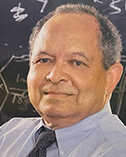
Donald J. Darensbourg
Texas A&M University-College Station
|
Primary Section: 14, Chemistry Membership Type:
Member
(elected 2022)
|
Biosketch
Donald J. Darensbourg is an inorganic/organometallic chemist whose early contributions dealt with spectroscopic and mechanistic studies of metal carbonyl derivatives. More recently he is known for his investigation of the chemistry of carbon dioxide with various metal substrates, ultimately defining catalytic copolymerization reactions of CO2 and epoxides or oxetanes. Darensbourg was born in Baton Rouge, Louisiana and received his B.S. and PhD degrees from California State University at Los Angeles and the University of Illinois/Urbana-Champaign, respectively. Following a brief period at the Texaco Research Center in Beacon, NY, he was on the faculties of the State University of New York at Buffalo and Tulane University. He has been at Texas A&M University since 1982 where he currently is a Distinguished Professor of Chemistry. He is a fellow of the American Chemical Society, and is a member of both the American Academy of Arts and Sciences and the National Academy of Sciences.
Research Interests
Donald J. Darensbourg's laboratory is interested in processes utilizing CO2 as a source of chemical carbon, primarily concerning the synthesis of CO2-based polymeric materials. He was among the first researchers to define the mechanistic details of CO2 insertion reactions into metal-carbon, metal-hydride, and metal-oxygen bonds which are pivotal steps relevant to CO2 activation in catalytic organic and biological transformations. These ground breaking studies in the area of carbon dioxide chemistry have provided the basic science enabling him to develop approaches to the utilization of CO2 in environmentally benign syntheses. His group demonstrated that metal salen catalysts in the presence of various initiators were very effective at catalyzing the copolymerization of a broad range of epoxides and CO2. Furthermore, these catalyst systems have enabled the synthesis of copolymers of high molecular weights with narrow distributions, >99% CO2 incorporation and excellent selectivity for copolymer formation vs cyclic carbonates, as well as high regio- and stereo-selectivity. In addition, they provide synthetic pathways to both random and diblock terpolymers composed of two different epoxides or an epoxide and other monomers, such as acid anhydrides or lactides. Some of his most recent efforts have been directed at synthesizing amphiphilic polycarbonates. These materials self-assemble in water to provide functional nanostructures which can serve as platforms for biomedical applications, and catalysis.

